-
JUNK HEAD (Takahide Hori 2017)
TAKAHIDE HORI: JUNK HEAD (2017)
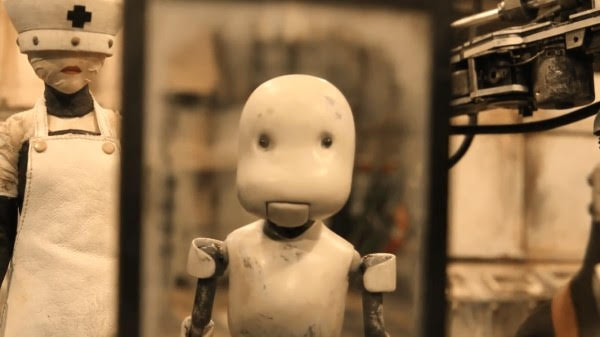
HORI'S LITTLE EXPLORER, IN HIS FIRST REPLACEMENT FORM, IN JUNK HEAD
In a post-apocalyptic netherworld
It's said Takahide Hori, presiding genius of Junk Head, personally shot 140,000 sequential photos to make his one-man-band seven-year stop-motion production. This sounds about right, since at the demanding ratio of 24 frames per second Hori followed, it takes that many 24-frame seconds to make up the ninety-seven-minute run-time of this post-apocalyptic voyage to the underworld.
Junk Head is a prodigious, obsessive labor of love. Though filled with mind-bending chills and thrills and yucks and shocks that may remind you of Eraserhead and Francis Bacon, it's not entirely satisfying as narrative; it's overly episodic and lacks a satisfying conclusion. (This may arise from Hori's original plan having been to make ten short films.) But the animation itself is as artisanally innovative as stop-motion can be. There's a great variety of critters and humanoids to wonder at and that restless camera makes this an exciting actioner. Notably also Hori, who made the film in his interior design studio, includes some deliciously complex miniature spaces full of scaffoldings, tunnels, stairways, overhanging structures. Their grandeur so much rivals Fritz Lang's Metropolis at times it can feel a bit out of sync with the grotesquery and comedy of the figures within them - and the Wall-E- like cuteness of Hori's soulful cyborg central character.
That character is encased in a protective body when first seen (and many of Hori's figures were baked in an oven). But the minute we first see him, he's being blown up, all except his head. Here's what's happening: It's way into the future. Through genetic manipulation humans have achieved longevity, but in doing so have nearly lost the power to reproduce. They cloned themselves, creating a race, or races more likely, of creatures called Marigans (Mulligans) to serve them lodged in a subterranean world - where they have achieved fertility. 1,200 years ago the Marigans rebelled. Nonetheless many of them look on humans as gods. Now that a virus has killed off 200 million humans, the "gods" have sent down an emissary to take genetic samples from the lower world in hopes of learning how to reproduce freely again.
The only thing left of this lonely scout is the head in its protective covering (we only briefly glimpse the face inside). The scavengers who've inadvertently nearly destroyed him take the head to "the doctor," who sees what has happened, and after much busy comical computer hocus-pocus, finds that the human has lost all his memory but still clings to life. He's accordingly attached to a new cyborg body with the cute Wall-E look. He's supposed to be under the care of attendants, but he's soon out on his own in a maze of dusty, dingy, complex corridors and warehouses where menacing giant reptiles, spiders and worms, large and small dinosaur-like or Alien-like monsters, constantly threaten to destroy or devour.
In his new body he's dubbed "Junk Head" because he's assembled from discarded low value parts. But this body is Michelangelo's David compared to the clunky all-metal body and head he gets later, after he's blown up again. Then, he's called "Junkers," and is treated like the lowliest of servants. Memorably he's sent on a wild goose chase to bring back several dozen fresh mushrooms, and is cheated out of them and turned around in his path by an evil con man posing as guide.
This sci-fi road movie is like a horrific, futuristic Pilgrim's Progress, with lessons to be learned about the futility, deviousness, determination, helplessness, unexpected comedy, and occasional kindness even of this netherworld version of life. The thing is that even though he had animators and craftsmen helping him eventually this is Takahide Hori's universe, and the sense of being in one man's dark post-apocalyptic underworld is quite powerful and more than a little scary. (He voices most of the characters, who speak in subtitled invented language in a kind of whisper-rasp-gargle.) It's hard being in our own nightmares. Being thrust into this hyper-imaginative person's vivid, fully realized one is like David Cronenberg on acid.
One doesn't enter Hori's world as easily as one does Christopher Nolan's, say, or Eric Rohmer's. One is too constantly aware of the foreign, external made-ness. Inevitably one may start thinking about what we've heard, about the seven years the filmmaker spent on the handcrafted work; of the earlier 30-minute version that was shown in Japan to an excited audience, which gathered supporters, though crowd-sourcing was inadequate at first. We remember stories about how Hori didn't even know he was making stop motion, and had to Google it; struggling for four years to complete the 30-minute "Junk Head 1" in 2013, when he put it on YouTube and the Oscar-winning director Benicio del Toro commented: "A one-man band work of deranged brilliance! Monumental will and imagination at work." (See the Japan-Forward article for details of the struggle.)
I was put off by it at first and found Junk Head a bit of a slog, despite its reasonable length. It was in perusing the wealth of stills on the internet that I began to realize what a richness was here. On re-watching, I understood how compelling the film is, what a forward thrust it has. Despite its episodic and repetitive nature, Junk Head creates a world and guides you through it forcefully. For animation fans this is a must-see.
Now in 2021 the film, which won the best animated feature award in its 2017 debut at Fantasia, has finally come out in a theatrical version in Japan and has also been fitted with an alternate set of first-rate English subtitles to replace the original Japanese ones. One hopes it will find its way to theatrical showings in the US and the rest of the world. One also hopes this gifted filmmaker, with that "monumental will and imagination," will continue to make more films (probably with more outside help from here on). Hori reportedly has a second film ready for release. We look forward to it.
Junk Head, debuted Jul. 23, 2017 at Montreal (Fantasia Film Festival), winning Best Animated Feature Special Mention (Satoshi Kon Award), showing at nearly a dozen other international festivals in 2017 and 2018, including the Best Director of a New Wave Feature Award at Fantastic Fest (Austin, TX). Also included in the 2021 NY Asian Film Festival, where it was co-winner of the Audience Award, and as part of which it was screened for this review. It was recently released in theaters in Japan.
Interview with animator Atsuko Miyake by Genko Jason on Genkinahito.
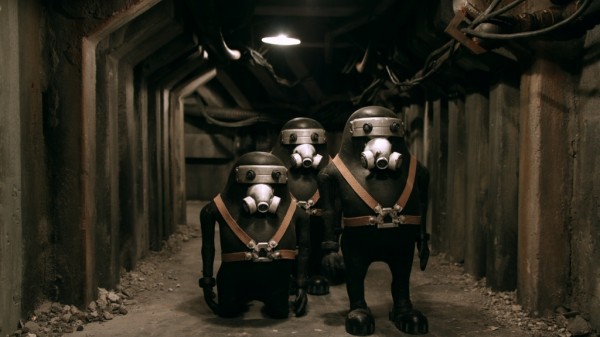
THREE MARIGANS IN JUNK MAN

A VAST SPACE IN MINIATURE BUILT AS A SET FOR JUNK HEAD
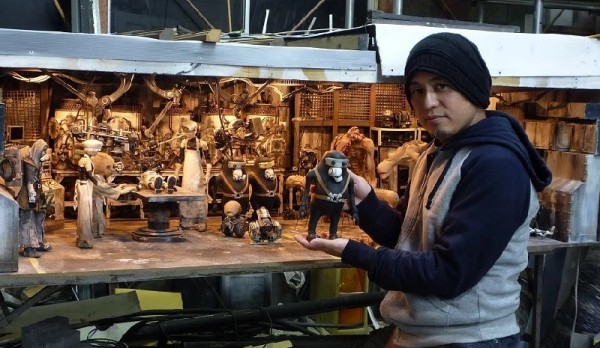
TAKAHIDE HORI WITH SET AND FIGURES FOR JUNK HEAD
Last edited by Chris Knipp; 08-23-2021 at 02:59 PM.
-
THE OLD TOWN GIRLS 兔子暴力 (Shen Yu 2020)
SHEN YU: THE OLD TOWN GIRLS 兔子暴力 (2020)
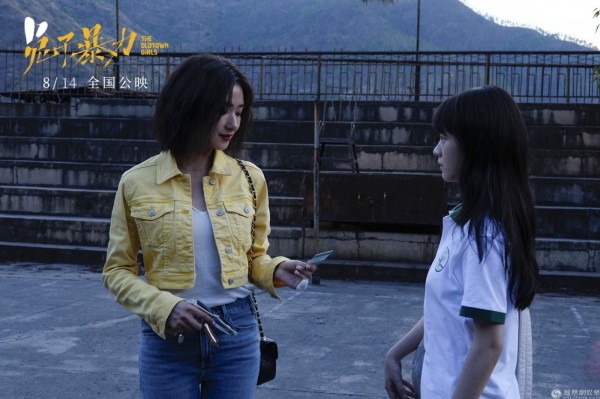
WAN QIAN AND LI GENGXI IN THE OLD TOWN GIRLS
Bad mother, weak daughter
What Shen Yu has chosen to deal with in her debut feature is very bad parenting, as well as, if one could call it that, very unwise "childing," which she presents in something of a "neo-noir" context in the setting of a lower tier city in contemporary China. This concept of "noir" seems a bit of a stretch; but if all you need is some cops and some losers, some criminal behavior and an overriding melancholy, you've got it. The dry, ironic feeling of traditional noir is missing. What we have left here is sadness. That seems to fit with the vast but cheerless milieu of this nameless city, surrounded by water and factories and not much hope.
The two central figures are an irresponsible young mother, Qu Ting (Wan Qian, of The Wild Goose Lake, a more fully noirish film) and her unwise daughter, Shui Qing (Li Gengxi). The girl is forced to live in the unfriendly environment of her father and stepmother, equally mean and uncaring. It turns out her mother left when she was one year old, so she says when she appears. Poor Shui Qing falls upon her with almost unwelcome delight, blind to the fact that Qu Ting is childish and irresponsible - and being a kind of dancer, a theater person, herself inadequate and needy, probably hopes to do a star turn and be admired, which works. Then when Qu Ting is around for a while some heavies appear, employed by loan sharks, very bad company indeed (the "noir" personalities). Qu Ting has borrowed a lot of money from very bad people and needs to pay up pronto. You know the drill.
This happens, but the film opens in medias res with a very troubled event that happens later in time involving Qu Ting's bright yellow car (she surrounds herself with yellow things, for various symbolic reasons, no doubt), Sui Qing's father, and a classmate's father, and some cops outside a station. There is talk of a kidnapping, and then a mistake, and then something much worse. This puts the viewer on her guard and creates a sense of excitement. The trouble is it's hard to follow up when you start out a film so fast, and director Yu has somewhat deadened her climax. Nonetheless this opening is sophisticated and original; and the titles, with the sweeping music and panoramic shots of bridge and water and large, nondescript Chinese city, really grab you and make you expect a lot, perhaps a bit more than you actually get.
The two actresses are the thing, anyway, and their interactions don't disappoint. As Qu Ting, Wan Qian is memorable, mercurial, totally unreliable, glamorous and disreputable in equal measure. As Shui Qing, Li Gengxi is good too, vulnerable, desperate, above all desperately loyal to her newly discovered mother, to whom she attaches herself and for whom she's instantly ready to risk all, and does. It's acknowledged in the dialogue when Qu Ting tells Shui Qing, knowing she's brought her only trouble, that if she hadn't come along she would be a normal schoolgirl. Now, she is not.
There is infinite pathos in Shui Qing's attempt to hold on to her two girlfriends, the quiet Ma Yueyue (Zhu Zyng) and Jan Xi (Yu Chai), who poses as a model and has rich parents. A major sequence comes when Shui Qing begs Jan Xi, the confident rich girl (who inexplicably wears short shorts to school when nearly everyone else is in uniform) to come to her birthday the next day. Jan Xi says she will, only if Shui Qing reads a statement over the school pubic address system that she's written about her mistakes with and betrayal by her mother - and Shui Qing, as unwisely loyal to her girlfriend as she is to her mother, does read it.
Before this, three is a sequence where Qu Ting comes to the high school with the teacher's cooperation and teaches a wide-ranging class in dancing, and into this for a partner draws the class hottie, Bai Haowan, leading to much suspicion and jealousy, since all the girls long for Bai Haowan. This is a throwaway, but serves two purposes. It's another of this film's many demonstrations of how mean people can be, and it displays how impressive Qu Ting can be, but only fleetingly, since it's only a one-time performance.
The three coauthors of the script, Shen Yu, producer Fang Li, and Qiu Yujie, contribute many other details and developments of characters to the action. The multiple hands may account for a structure that, from the attention-grabbing opening, never quite fully coheres. Yet there is a freshness here, and a skillful blend of art film and entertainment.
The sweeping music has been mentioned, though there's always a danger that when one notices a score, it has gone wrong. Likewise with the cinematography of dp Wang Shiqing, which makes people look blurry sometimes, and one wondered why.
The Old Town Girls 兔子暴力, 104 mins., debuted at Tokyo Nov. 1, 2020, also showing at Moscow Apr. 26, 2021. It was screened for this review as part of the 2021 NY Asian Film Festival (Aug. 6-22,) shown (internet) Aug. 13. Release in China Aug. 14.
Now coming for rental online in the US Dec. 23, 2022. See HERE.
Last edited by Chris Knipp; 12-13-2022 at 09:20 AM.
-
Roundup of the asian film festival, 2021
Comments: NYFF #20.
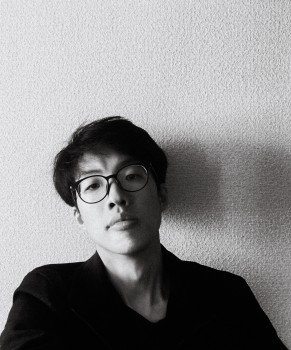
OUDAI KOJIMA (JOINT)
I found most of the films I chose to screen in this year's NYAFF interesting, as I have before. This is a fabulous film festival for its variety and quality.
I admired the Japanese film A BALANCE (Jujiro Harumoto) for its seriousness in treating of a woman documentary filmmaker working on the fallout from a teacher's seduction of a student (or vice versa), who then finds a similar problem arising in her own family. It's a very intelligent and subtle film and reminded me of Asghar Farhadi and Michael Haneke.
Obviously Takahide Hori's JUNK HEAD, which I've just reviewed, a virtually one-person dystopic stop motion animation, is a once-in-a-lifetime film; I'm glad the NY festival audience came out for it with an Audience Award. You don't get something like that in every NYAFF!
In Japanese cinema there's always a manga influence. Manga-sourced films this time were THE FABLE: THE KILLER WHO DOESN'T KILL (Kan Eguchi); SENSEI, WOUILD YOU SIT BESIDE ME? (Takahiro Horie); and ZOKKI (by three directors) - which shows manga can be many different things (a very slickly made sequel movie of a yakuza hitman story, a tale about a cute hotshot manga-writing couple with fidelity issues; intermingled short stories about weird outsiders. This one felt like Kaurismaaki, or Roy Andersson.
MY MISSING VALENTINE (Chen Yu-Hsun) almost could be manga, but it's Taiwanese. High concept rom-com storytelling of a high order. At the country's awards it won all the prizes, yet some writers found it odd or improper, so there were complications or flights of fancy some audience members don't get. Very winning - and thought-provoking.
JOINT, by 27-year-old Oudai Kojima, who lived from age 3 to age 13 in NYC (which may count for something) but attended high school and college in Japan, approaches the Japanese gangster movie with a very fresh eye, a fresh visual look, new up-to-date-information, including an angle on the new yakuza "business" focus. Very interesting and promising. If you like genre as much as I do of course you want to see someone ring changes on it. As the Lincoln Center blurb says (they are presenting the film), Kojima "creates a compelling portrait of today’s underworld, with multi-ethnic characters who are scrambling to bridge physical, generational, and moral divides." It's quite possible the fresh outlook of his time in New York contributes to his awareness of this.
BOOK OF THE FISH (Lee Joon-ik) was refreshing, black and white, Korean historical film, yet somehow never heavy, it looks at an intellectual high in government banished in 1800 to an island for involvement in Christianity, seen by the king as subversive. This leads to meeting a fisherman with intellectual ambitions and a collaboration on an unprecedented book about fish. Based on true events. Not just a palate cleanser but sometimes we do need that, and not just at a festival.
Others were good to know about or I'm glad they were made, like A SONG FOR YOU (Dukar Tserang), about a soulful, cool Tibetan who kind of wants to become a rock star but thinks he's a bigger hotshot than he is. Damtin Tserang is an appealing, sexy lead, but also convincing as a bit of a hick. My dream that this film would evoke early Jia Zhang-ke was not fulfilled, but Jia did co-produce.
Wish I had gotten to more of the exotic ones.
I forgot to list NINJA GIRL (Yu Irie), which is a free story about local town politics, liberally laced with fantasy. I think it's admirable, but perhaps not so memorable.

-
ANIMA 莫爾道嘎 (Cao Jinling 2020)
CAO JINLING: ANIMA 莫爾道嘎(2020)
 \
\
QI XI IN ANIMA
Inner Mongolian drama set in an eighties lumber camp
Set in Inner Mongolia in the 1980s, when China launched economic development programs that resulted in widespread clear-cutting of old growth forest, this is a passionate but overbearing and unduly gloomy debut that combines fraught love conflict with a message about threatened ethnic minorities and planetary degradation. Anima focuses on two Evenki tribe brothers and their rivalry over a pretty and very resourceful "wild woman" widow; but it is really about the death of their traditional way of life, and of our planet. I respect the central notion that we are all part of one soul (the "anima" of the title), but the film would work better if it let the larger environmental topic take care of itself. Unfolding in mostly frigid, austere locales, with cinematography by Hou Hsaio Hsien regular Mark Lee Ping-bing, writer-director Cao Jinling’s film plunges us into the rough world of a community that has been drawn into the destruction of its own native environment to survive.
It all starts with breathless whispered narration à la Terrence Malick by the protagonist, Linzi, extolling the seasons, followed by the story of how On a cold winter day in the town of Muirdauga (Mo Er Dao Ga),* as a small boy he fell into a bear den during a hunting trip and his older brother TuTu is forced to kill the bear, which is considered taboo and labels him an outcast in the Evenki tribe. Their mother dies in this exploit. As adults the brothers, who have been exiled with their father to a small twon on the edige of the forest, work in a lumber camp run by Boss Yan, who heads the biggest of the Han lumber triads that are moving into tribal territory. At the camp, Linzi is forever pouty and unwilling while Tutu is crudely enthusiastic about anything to make a buck.
One day comes the big plot twist: Linzi (Eric Wang) is strolling in an old growth forest that is his secret when he is caught in a wolf trap set by Chun (Qi Xi), the widow who will become his wife. She winds up coming to the logging camp and being the replacement cook for a while, leading to Tutu's becoming enamored of her, but Linzi is the one who fell into her trap, so she chooses him.
The action is sometimes charming and funny, the setting authentic, but unlike other reviewers, among whom Wally Adams of Eastern Kicks seemed the most helpful (I am indebted to him for my understanding of the background of the story), why do I find the film deeply unsatisfying? Simply because it seems so manipulative from the very beginning, with its contrasting brothers, its pointed early trauma, and all the rest, and then a finale in which nature has its way. Director Cao Jinling gets our attention; I'll grant him that. And his recreation of a macho Chinese lumber camp is interesting. But the writing is heavy-handed.
Adams calls Anima "probably China's finest 'minority' film at least since 2015’s Paths of the Soul" and says that "what that film did for Tibetan land, culture and beliefs, Anima does for a people and place considerably less explored in the Western consciousness." So be it, but I was reminded for some reason of Zacharias Kunuk's 2001 extraordinary film of an ancient Inuit legend, Atanarjuat. That may be unfair. But there's a "minority film."
Anima 莫爾道嘎(Mordaoga), 120 mins., in China Evenki and Mandarin, debuted at Cairo, where Qi Xi was nominated for the best actress award, and showed at many other international festivals including Hong Kong, Moscow, Singapore, Shanghai, Udine, Fribourg, and the NYAFF.
*Adams explains "Mo Er Dao Ga" (the film's original title) and the now protected Moerdaoga national forest to which it now refers, and the trajectory of Inner Mongolia in his review.

Last edited by Chris Knipp; 10-13-2021 at 01:20 AM.
 Posting Permissions
Posting Permissions
- You may not post new threads
- You may not post replies
- You may not post attachments
- You may not edit your posts
-
Forum Rules








 Reply With Quote
Reply With Quote


 \
\
Bookmarks